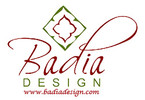There are no products listed under this category.
Shop By Category
Shop By Brand
Shop By Brand
MOROCCAN RUGS
Morocco's history and the story of Moroccan weaving begin with the Berbers, the indigenous people of North Africa who had inhabited Morocco for centuries before the first Arab invasion in the seventh century. Today, the major weaving groups of the Middle Atlas and High Atlas mountains are Berber tribes, many of whom still live much as they did centuries earlier.
While remarkably diverse, Moroccan flat woven and knotted pile rugs are almost without exception, bold in color and lively in pattern. Designs are made up of geometric motifs arranged in seemingly endless variations. Each tribe has its own distinct repertoire of designs and colors significant to the ceremonial and day to day life of the group. These same patterns can be seen in the art forms relating to other areas of tribal life such as in ceramics, architectural decoration, and tattoos worn by Berber women. Although a weaver draws from the vocabulary of designs particular to her tribe, she works at her loom without a diagram or pattern to guide her. As a result, each rug is a unique creation, a celebration both of her tribal identity and her own artistic imagination.
Moroccan Rugs are handmade with techniques passed down from generation to generation of art, each made by a well know Moroccan artist and his unique style that still amaze people, even in Morocco.
Moroccan rugs are easily recognizable; they usually have varied abstract and primitive patterns and a Shag Rug Texture.
Types of Moroccan rugs are:
1) Moroccan Berber Rugs - they can be flat woven (like a kilim) or pile and sometimes even a combination of the two.
2) Beni Ourain Rugs - they almost always will have a white color background, abstract geometric designs and a shag rug texture.





